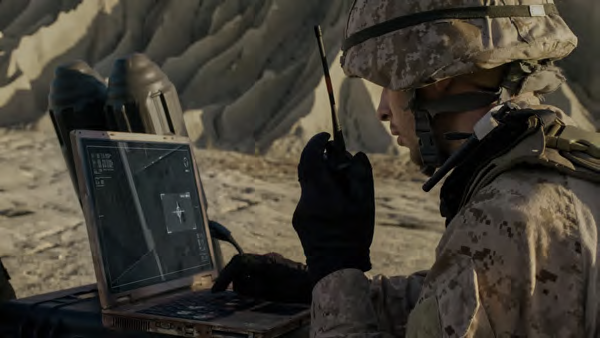Dave Broadbent, President of Government Solutions, Intelsat
In recent months, the crisis at the southern U.S. border has become top of mind for policymakers and U.S. citizens alike—illegal border crossings have increased dramatically.
Policymaker concerns around cartel activity and the illegal transportation of substances such as fentanyl into the U.S.
have escalated.
In the complex theater of border security, technology often makes the difference between awareness and vulnerability. I should know: I’ve dedicated my career to advancing secure communication capabilities for our nation’s most demanding missions.
 In recent months, I’ve witnessed firsthand the extent to which connectivity has transformed from a luxury to a necessity for effective border operations.
In recent months, I’ve witnessed firsthand the extent to which connectivity has transformed from a luxury to a necessity for effective border operations.
Our southern border spans nearly 2,000 miles, much of it through territory where cellular networks are non-existent and terrestrial communications infrastructure is impractical to deploy.
In the rugged terrain of Arizona’s deserts and the dense brush country of South Texas, our Border Patrol agents face unforgiving environments.
Traditional infrastructure simply cannot reach these remote areas, creating dangerous blind spots.
Speak with law enforcement agents on the ground, and you will find that their concerns are consistent. They need to coordinate responses across multiple agencies. They need to deploy surveillance technologies that can see what human eyes cannot—and increasingly, they need to process enormous amounts of data in real-time to make informed decisions.
They can do none of this without effective communications technology.
At Intelsat, we’ve developed a wide range of multi-orbit, secure SATCOM managed services that have been specifically designed to address these challenges.
Our solutions provide the reliable high-throughput global coverage of our geostationary earth orbit space-and-ground network along with the high-speeds and low latencies of our Low Earth Orbit (LEO) network partners.
 This means we are providing law enforcement agencies, as well as first responders, with the resilient, high-performing connectivity they require to stay connected to their missions.
This means we are providing law enforcement agencies, as well as first responders, with the resilient, high-performing connectivity they require to stay connected to their missions.
The operational impact is transformative. At the sheriff’s office in Cochise County, Arizona, we recently deployed our multi-layer satellite communications system (MLCS).
We’ve integrated satellite, cellular, and ground-tactical radio systems via a managed service that ensures seamless communication with the Sheriff’s 911 dispatch center, even when officers are two miles away from their patrol vehicles.
Beyond ensuring more effective missions, these systems have shown the potential to make law enforcement officers safer in an ever-escalating threat environment.
The reality we must confront is that adversaries at the border are constantly evolving their tactics. They exploit gaps in our awareness and communications. They target the seams between agencies and jurisdictions. They operate in the shadows where our infrastructure is the weakest.
Ensuring that our law enforcement agents at the border have the best possible communications infrastructure isn’t just about technology—it’s about eliminating these vulnerabilities, ensuring that the dedicated men and women protecting our borders have tools that match or exceed those used by the threats they face.
As we look to confront our border security challenges head-on, I believe that three priorities should guide our approach to satellite communications infrastructure:
 First, we must invest in capacity. The volume of data required for modern border operations will only increase as more advanced sensors and analytics come online. Our satellite networks must be scaled accordingly.
First, we must invest in capacity. The volume of data required for modern border operations will only increase as more advanced sensors and analytics come online. Our satellite networks must be scaled accordingly.
Second, we must focus on interoperability. Border security involves multiple agencies at federal, state, and local levels. Satellite communications systems must facilitate seamless information sharing across these organizational boundaries.
Finally, we must remain agile. National security threats at our border have evolved rapidly, and our technology must move just as quickly. This requires close partnership between government and industry to ensure innovations in satellite communications are rapidly fielded where they’re needed most.
The security of our southern border is too important to be constrained by communications limitations. Through strategic deployment of satellite connectivity, we can ensure that remote geographies are no longer constrained by operational vulnerability.

Dave Broadbent
The technology exists. The expertise is ready. What’s needed now is the commitment to deploy these capabilities at the scale our border security demands.
Author Dave Broadbent is the President of Government Solutions at Intelsat, a leading provider of secure satellite communications to U.S. government and military customers.


